How do we use the body to interact with visual content?
How our gestures are read by digital devices
(patented gestures)
Régulièrement, des gestes sont déposés comme le « slide-to-unlock » (glisser pour débloquer) breveté par Apple. Julien Prévieux a commencé à collectionner ces gestes en 2006. Son hypothèse est la suivante : ces brevets définissent une gestuelle que nous serons amenés à exécuter dans quelques années quand les outils seront commercialisés ; ils constituent une archive de gestes à venir. L’œuvre se déploie sous la forme d’un film d’animation en 3D, d’un film et d’un ensemble de performances réalisés avec des danseurs. La séquence 2 est un film réalisé avec six performeurs qui interprètent les diagrammes trouvés dans les brevets comme des partitions de danse. Prévieux s'approprie ces mouvements et les libère de leur fonction pratique par l'abstraction chorégraphique. Et ces schémas des brevets, une fois incarnés, pourraient effectivement bien donner à voir nos comportements futurs.
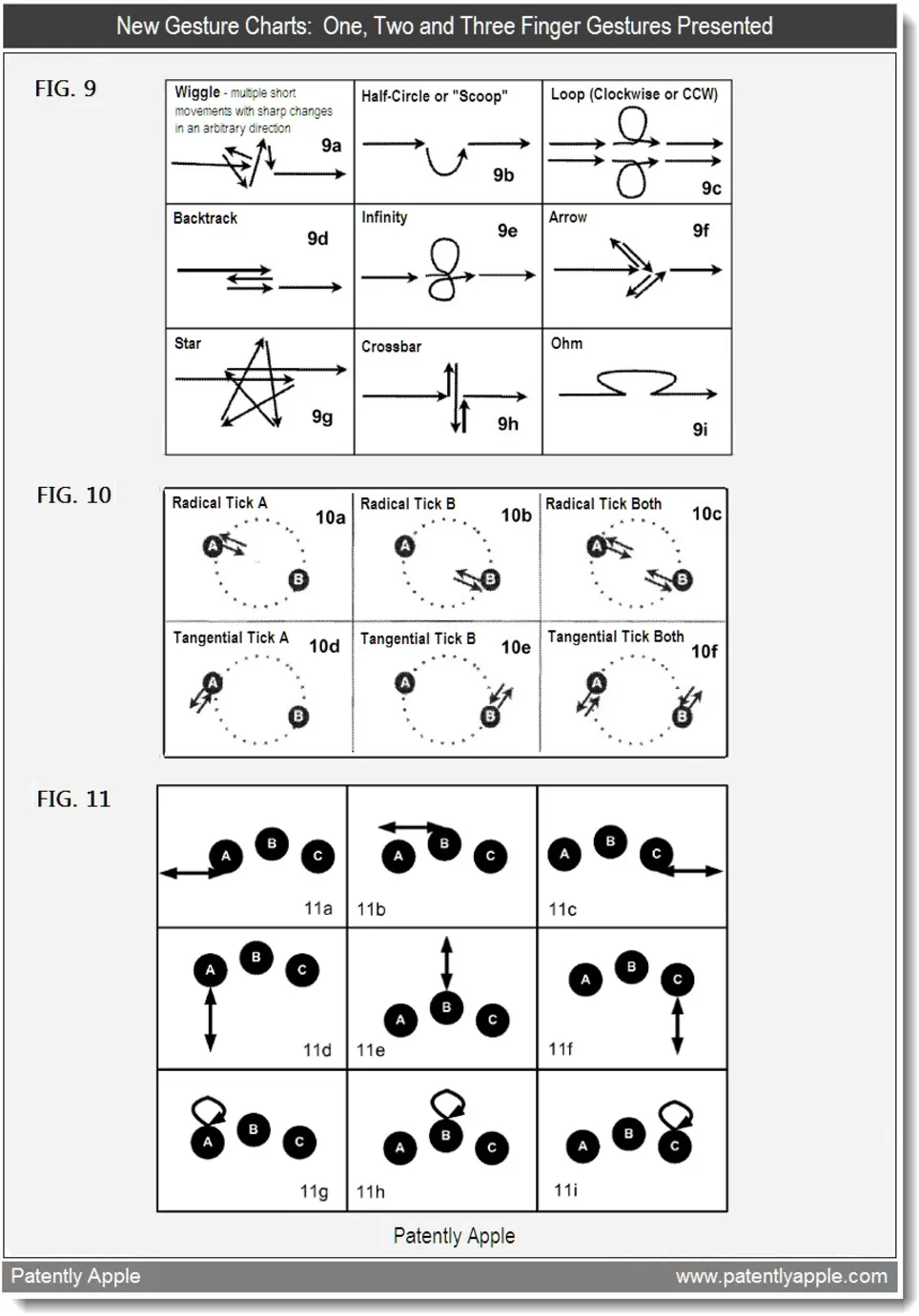
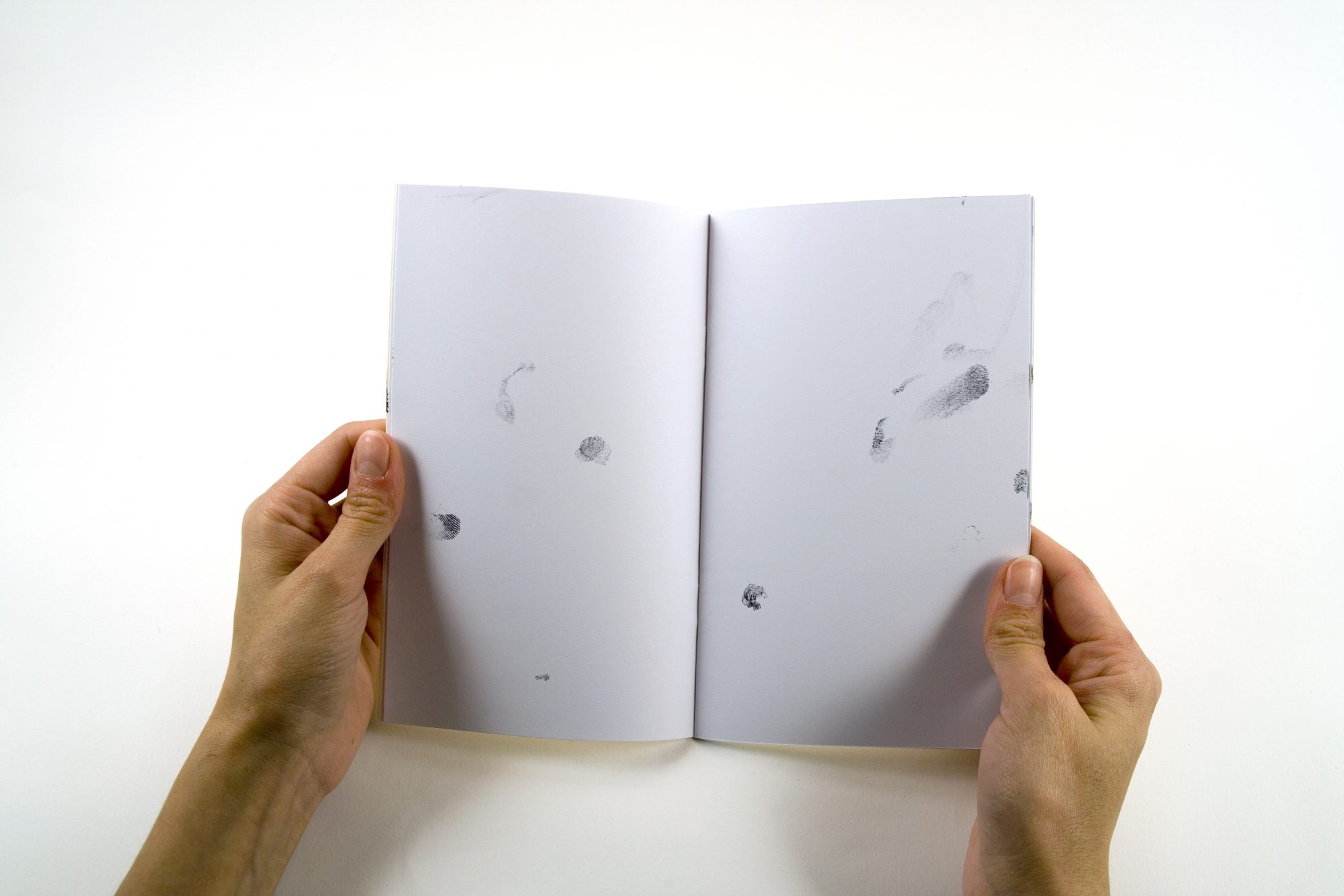
Julien Nédélec, Feuilleté.
An artist book with only a cover printed. The interior pages are almost white, showing only finger prints with black ink, showing prints of the body which first read it. It takes the look of a classical "poche" book, that almost anybody could own. The absence of content and finger prints show how the reader can manipulate the object using his hands.
A diagram showing patented gestures from Apple devices
(date unknown)
Here the gesture is shown by a notation, wich could look like a choreography notation.
Unpatented gesture
Spontaneous gesture
> Can digital devices shape our gesture ? Making it universal ? standardized ?
How can digital devices in a way OWN our bodies and gestures ?
It seems to be a gap between the gesture we employ to read online and on paper. Most of the webpages use the scroll model, in a contemporary remake of the volumen (horizontal or vertical), while the classic form of the printed book is the codex. These two ways to deploy content involve different ways to navigate through visual content, and so different way to move.
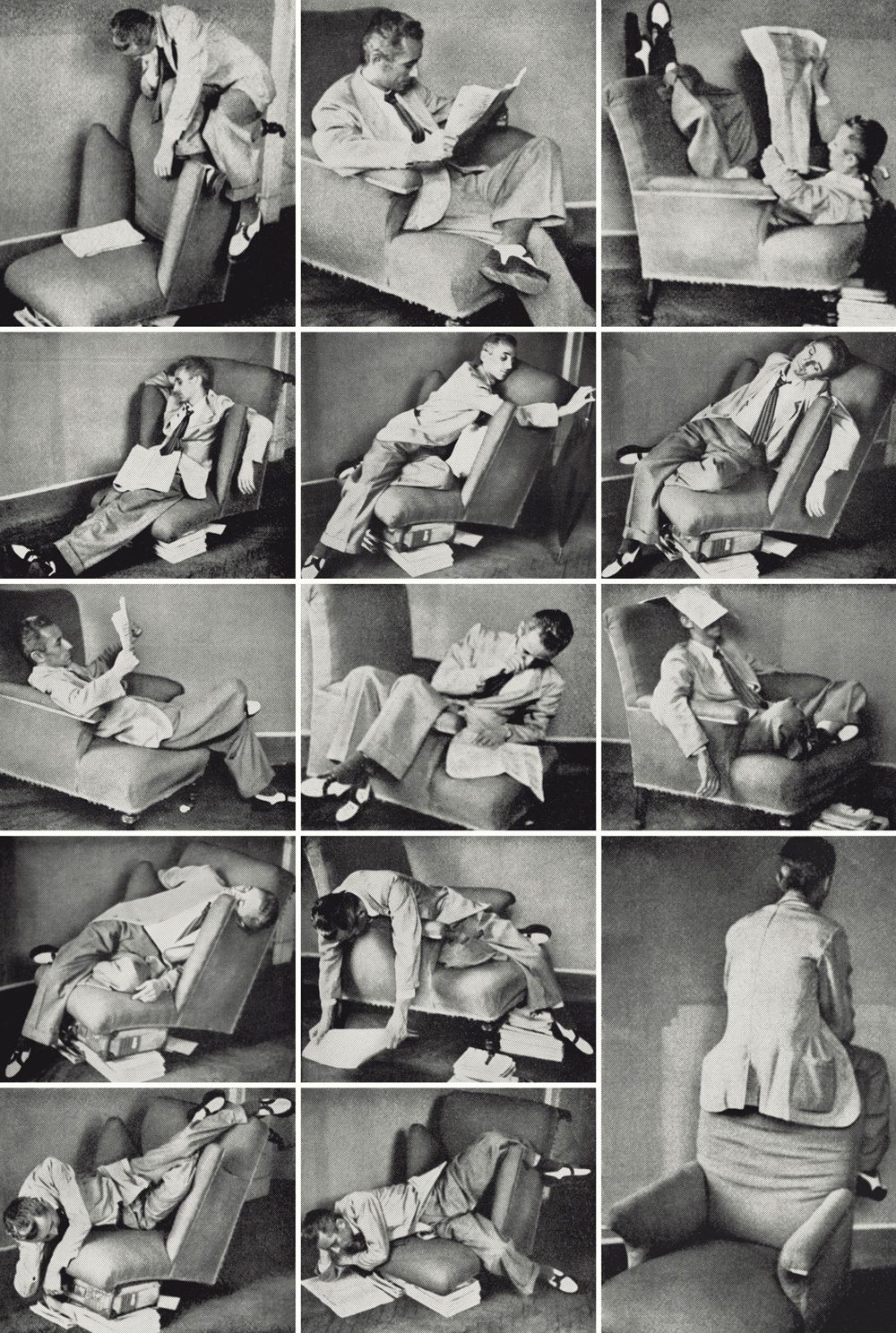
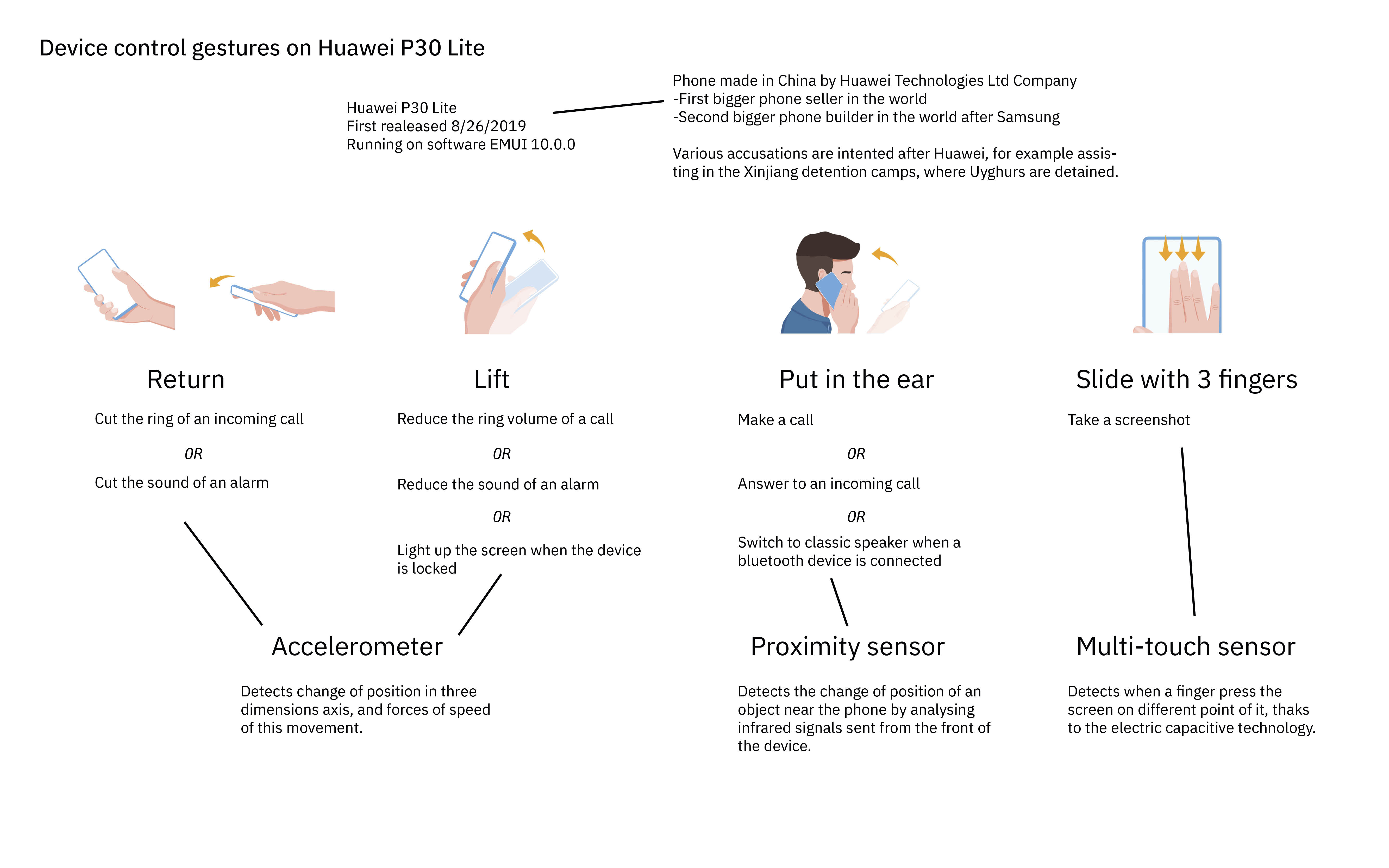
Ines Cox’s latest project, a book titled SAVE, is the culmination of a two-year research period at the Royal Academy of Fine Arts Antwerp. During this time she explored our relationships with technology, focusing particularly on the designer’s perspective and the reciprocal nature of the interaction with their computer. To do this, she consciously observed, documented and imitated the aesthetics that appeared on her own screen, generated by the computer and its software.
“In the book I try to protagonise the volatile and seemingly unimportant steps of the digital (working) process and reveal them as printed matter,” she explains. “I present them as an associative string of screenshots that tell a story where (graphic) characters and quotes (transcribed from the computer) become part of a particular choreography.” By collecting these “visual souvenirs” of her digital actions, which take the forms of photographs, designs, words, drawings and prints, they become “vehicles with which to communicate about our time and formats to suggest narratives on the universe we inhabit.”
Ten Fat Drawings
Vanessa Dziuba & J-P Bretin
A giant book which can only be read when laying down on the ground, making the reader move around it and produce some uncommon gesture and postures for reading.
Ten Fat Drawings
Vanessa Dziuba & J-P Bretin
A giant book which should be read laying down on the ground, inducing for the reader an uncommon gesture and posture.
Camille Trimardeau
Éditer la performance (Graduation project for DNSEP in Le Havre)
A lead book, which makes the gesture of reading (turning the pages) a physical exercice. Only a few instructions appear on the pages, asking the reader to go back and forth in the book, then manipulate the heavy pieces of lead.
"une approche sportive du livre"
Francis Alys, Paradox of praxis
"Sometimes doing something leads to nothing"
During the performance, the artist carries a block of ice through the streets of Mexico city, until it totally melts.
It refers to the actions of the daily workers i Mexico, who are hired to carry objects from a point of the city to another, producing nothing but movement for a living.
GESTURE OF THE WORKER
---> Ines Cox
Francis Alys
What gesture do we employ as graphic designers? (working with both analog and digital tech, softwares and our hands)
What is it to do things digitally or analog ?
For ex. how do I copy/paste with a computer or with my own hands?
What gesture appeared/disappeared due to digital tech?
How objects/devices induce a way to behave/act/move?
TOOLS
body as a tool
tool as an extension of the body
Digital tools (softwares) inducing a precise way of creating/visualize/produce/interact
How to fully involve the body in a digital creation process?
EXPERIMENTS
Frank & Lilian Gilbreth
photographs of industry workers' gesture,
in order to improve productivity, in the following of Taylor's work.
(10-20s)
Workers' gym
Morning exercices organised by bosses in factories in order to train workers, deresponsabilise themselves in case of accidents.
Find a kind of routine for digital workers-designers-users of patented gestures?
My research for the thesis is now focusing on hand gestures involved in both production and reception of designed content.
I place hand(s) as the connecting member of the designers to their tools, apparatus and instruments, and of the reader to this designed content.
Which gestures? technical gestures, in the case of digital devices "interfaced" gestures, patented gestures.
I might then reformulate my research question in these terms of connection to the technic world through the body, and especially the hand(s).
I'm also questionning the digital devices influences in the production and reception process, how it transforms our gestures? does it make it poor? how our analog and digital interactions with designed contents are linked, on which level they're different? where is the place of the designer (actually like myself) using softwares and tools that he/she doesn't perfectly understand? does it create an awkward relation to digital devices? how can we accept/get around/subvert the otherness in these tools?
How to embody the tools we're using, especially digital ones?
As I talk about the difficulty to fully understand the usual digital tools we use, I'd like to talk about "technological sublime", a contemporary notion inherited from Kant and Romantics' sublime, the idea of the elusive, vast, complex nature escaping to human's understanding.
BODY
PERCEPTION
PHYSICAL EXPERIENCE
connected with
DIGITAL/ANALOG TOOLS
INSTRUMENTS
APPARATUS
SOFTWARES/HARDWARE
through
HANDS
TOUCH SENSE
SENSITIVE EXPERIENCE
GESTURES (by the act of taking, grabbing, manipulating tools, objects)
Technological sublime in our daily lives since last year
Peter Jellitsch
Works on collecting data of wireless networks in the streets of LA, then processed into diagrams and repetitive hand drawings.
Set his body in the state of an antenna receiving and delivering data, drawing in a machine-like state comparable to surrealists' automatic writing-drawing during spirit seances or inconscious states.
Natasha Nisic, Catalogues des gestes, since 1995.
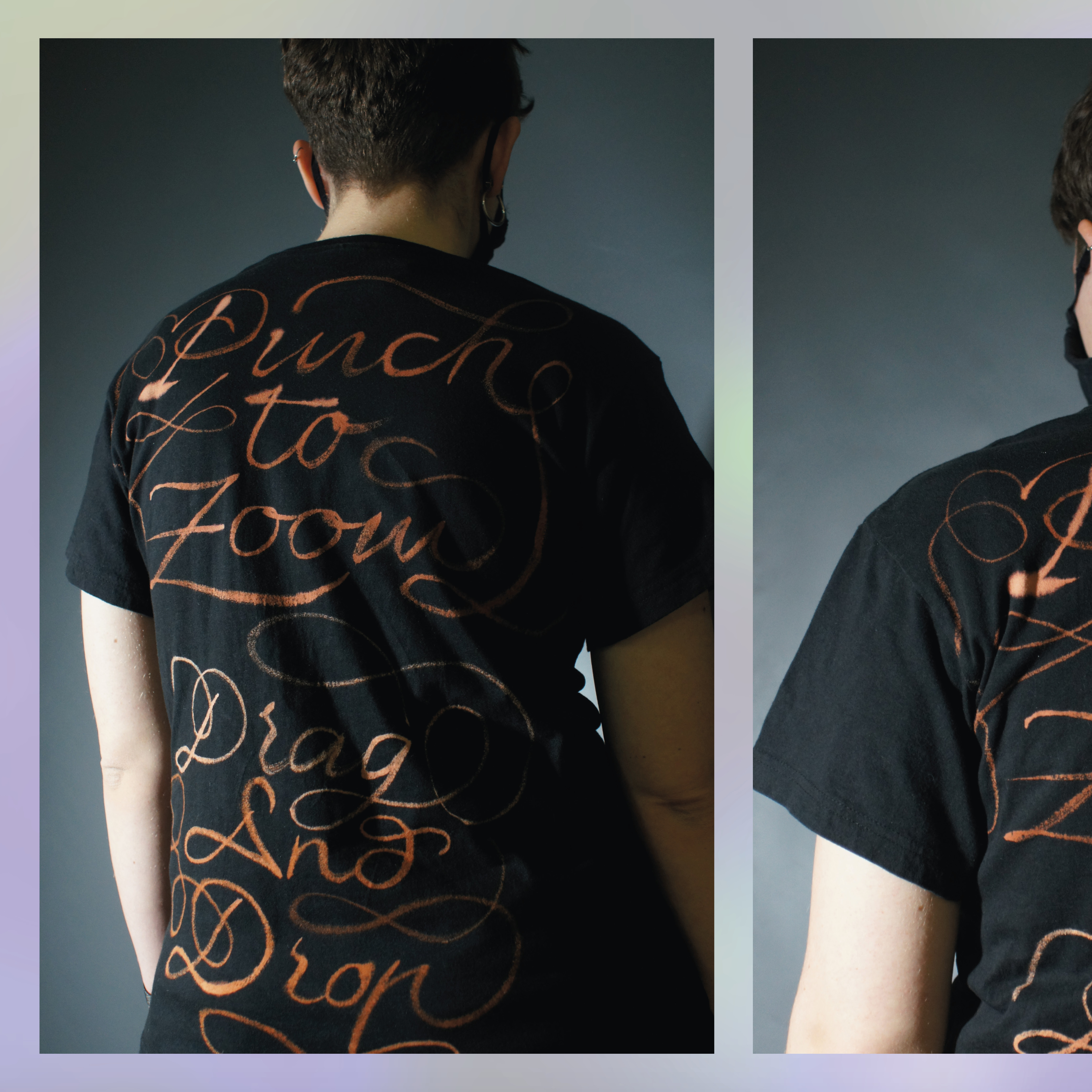
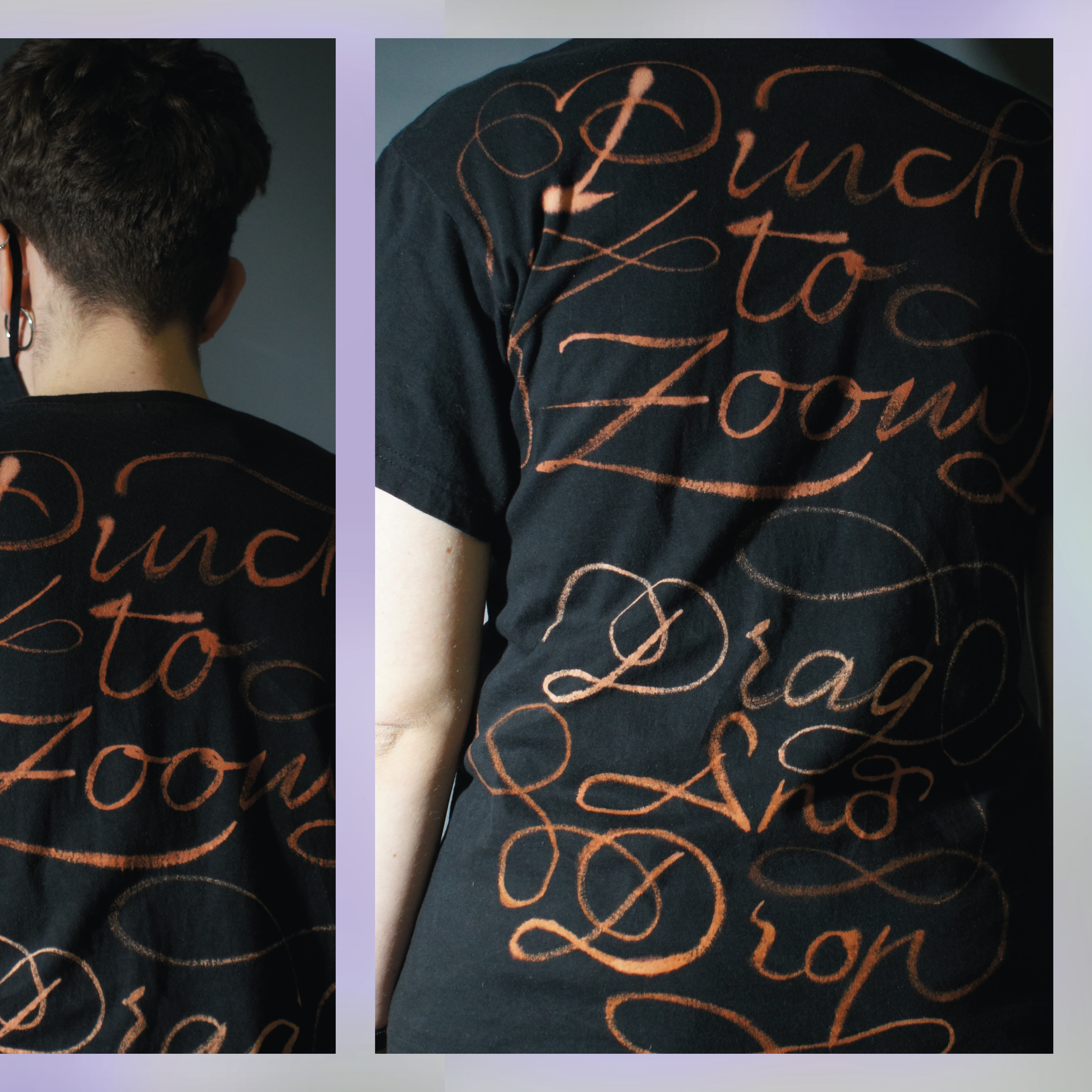
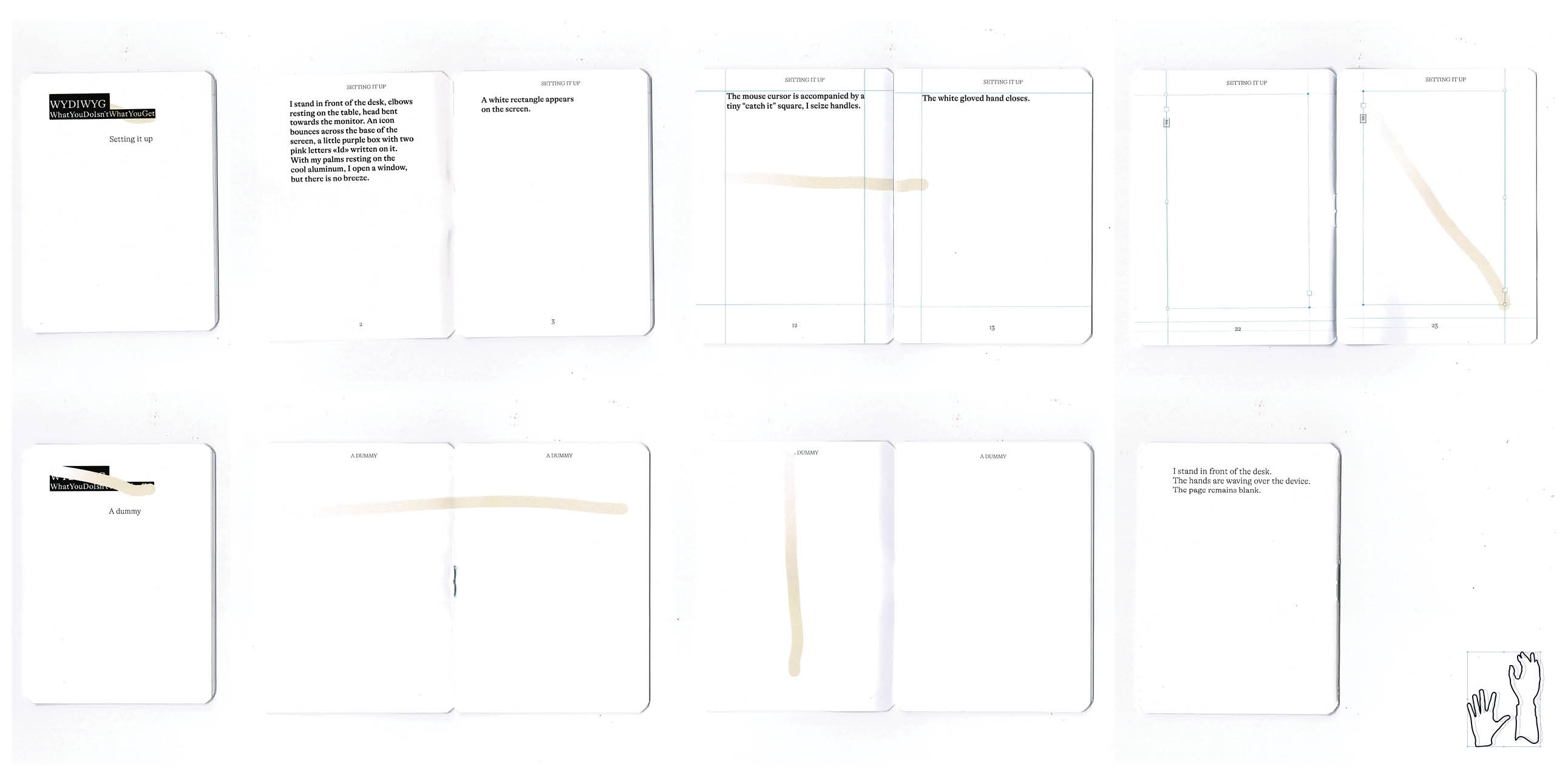
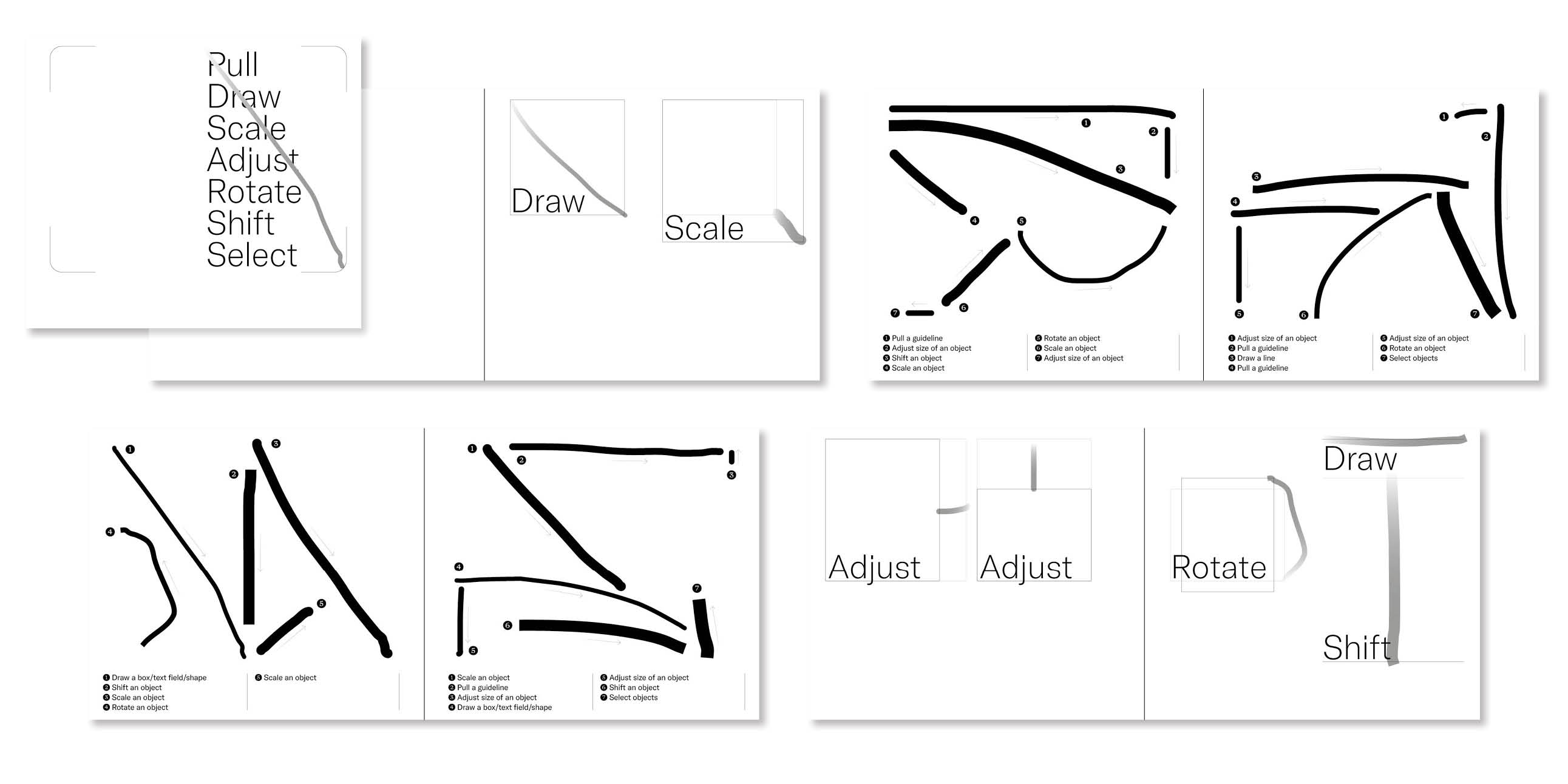
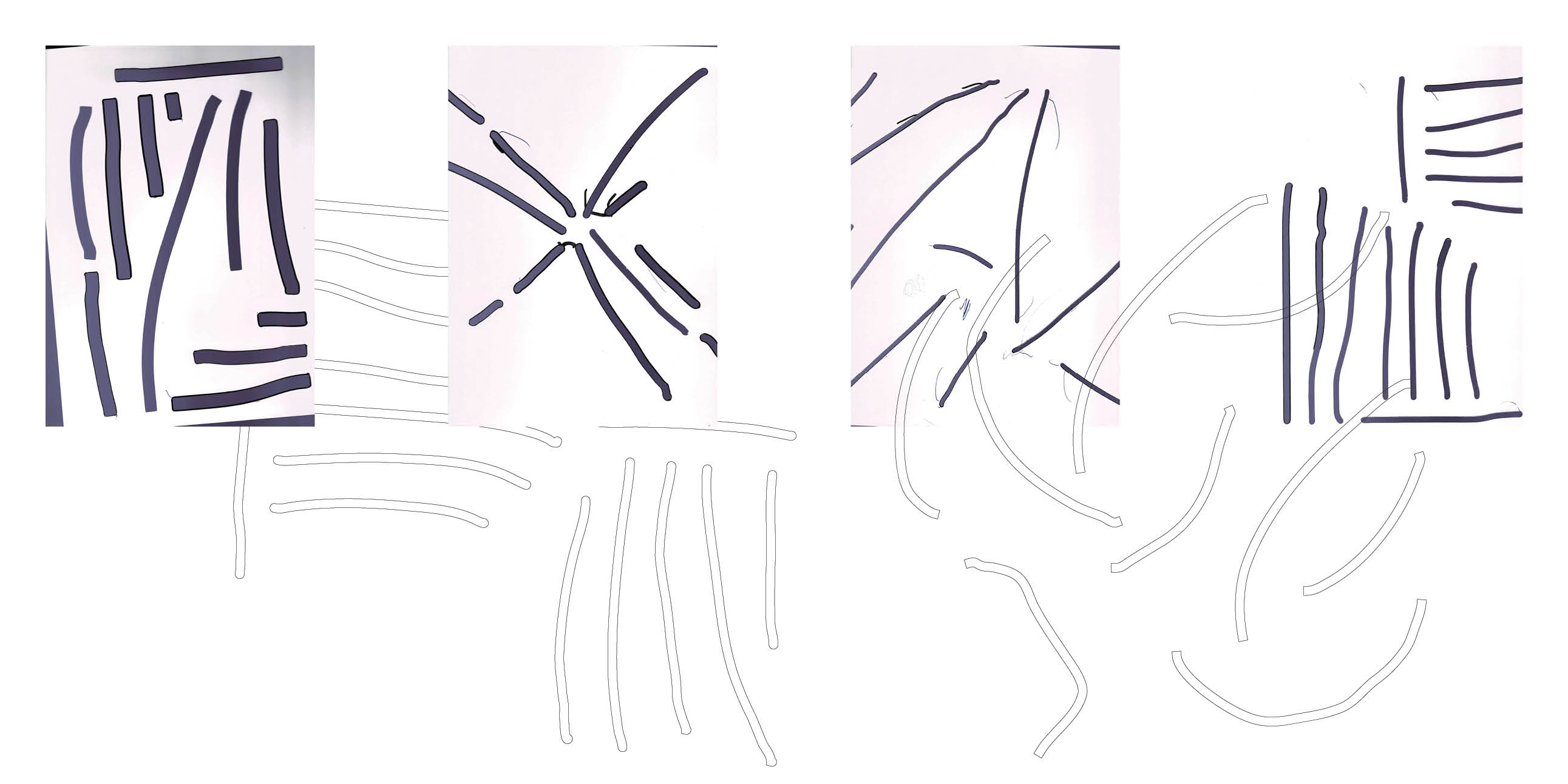
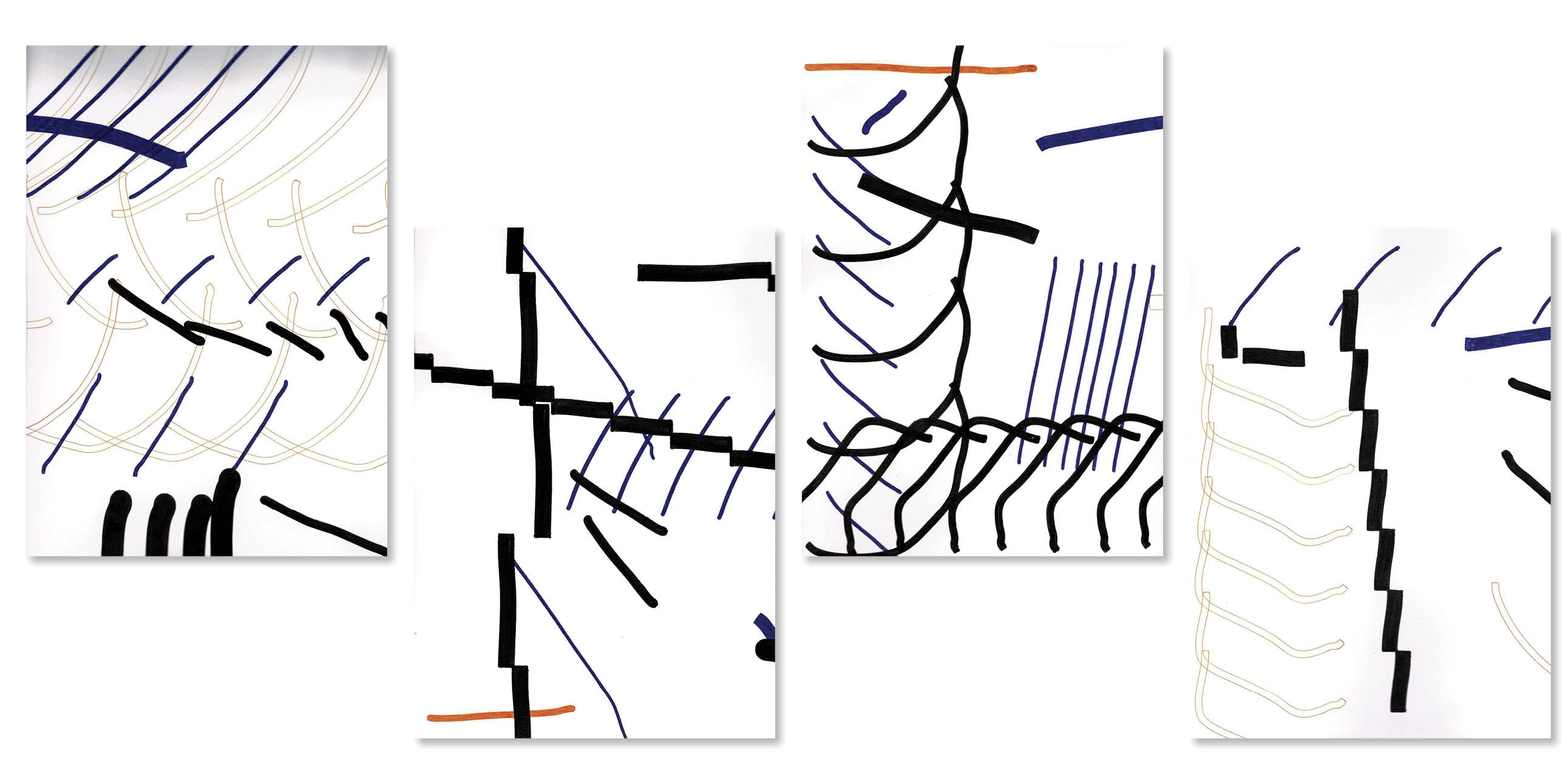
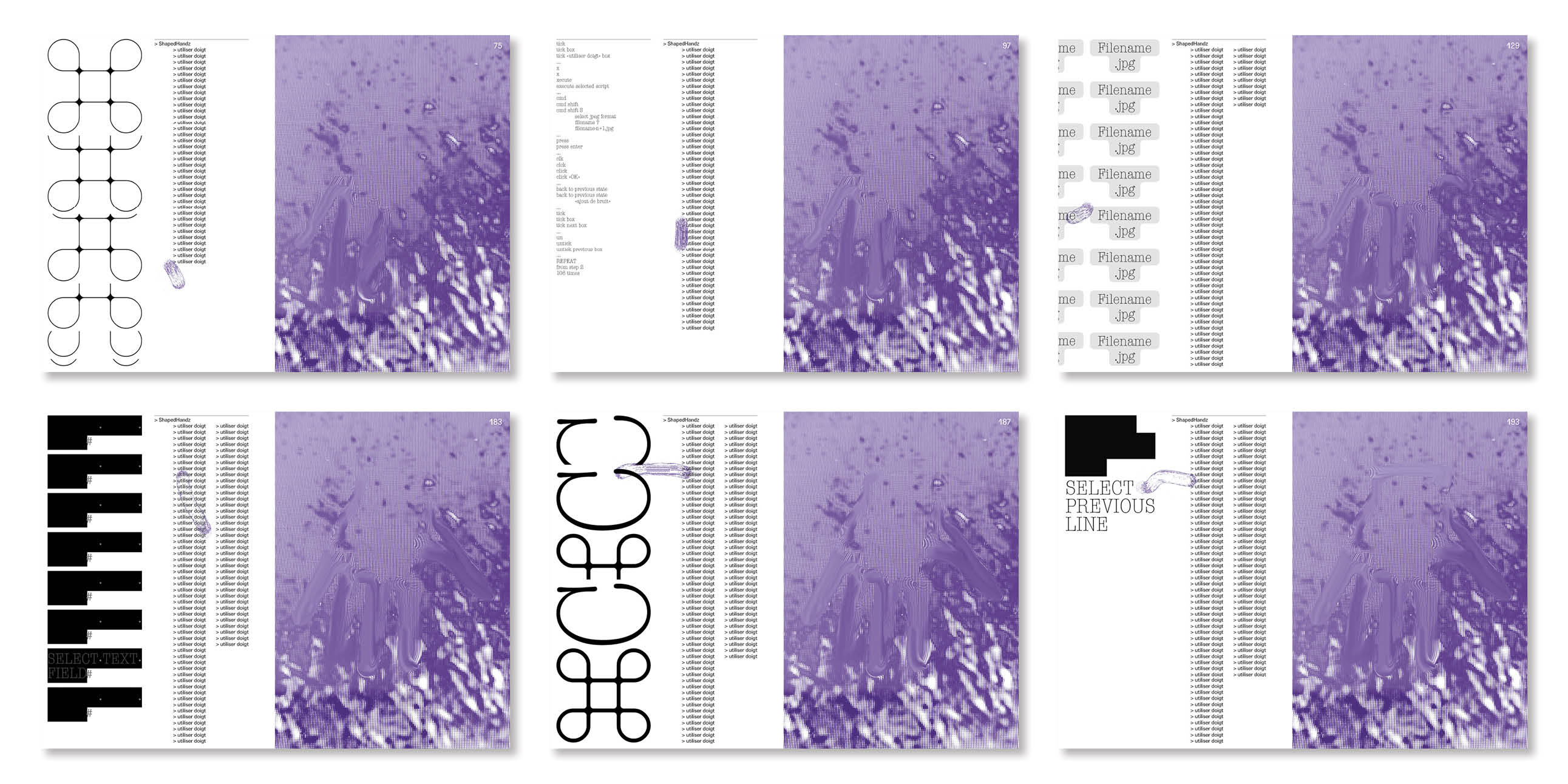
This visual essay presents the process of automation through
the use of scripts in image processing on Adobe Photoshop.
The process starts with a set of actions and gestures given as commands to the machine, which then executes them itself. Wanting to show each step of the work of the software, the series of actions is broken down and shown task by task, touch by touch. The desire to expose the machine’s execution mechanisms gives another twist to the sequence of script steps, in which the human hand intervenes again, first to delimit the action to be executed,
to define the frame-by-frame recording options, etc.
The same applies to the layout of this document, which reflects
the series of work steps. After generating a template that will be applied to all pages automatically, the positioning and adjustment of pictures and texts is left to the human hand, which frantically performs a succession of repeated micro-gestures.
By making the machine work for me,
I end up working like a machine.
Fingers move the pointer from x to y, but the screen remains almost white, stained here and there with thin lines, signs, handles to grasp. What happens from x to y ? An index finger skims the matte surface of the panel, gliding from a corner to the other. An index finger maintains a slight pressure on the opposite corner. With fingertips I push and pull guidelines, draw lines, boxes, scale and rotate objects on the screen. Hands are waving over the device. As I draw lines and shapes, do the fingers leave marks on the surface of the panel ? A thin layer of grease deposited by the skin, a fingerprint, a bit of sweat. What if these micro gestures left a trace on the surface of the screen, an imprint in the paper ? To give consistency to a contact, a touch, to make them visible, not to forget them between straight lines, aligned symbols, rigid grids. To give them an existence even before the objects they manipulate and move, a materiality. To recover on paper and screen the smooth grit of the touchpad under the skin, the coldness of aluminum. To recover the sequencing of movements, repeated, rhythmic. To recover a fine layer of grease or ink, an imprint or a stroke, a bit of sweat or color.
"I stand in front of the desk.
The hands are waving over the device.
The page remains blank."
Dummies are objects that designers manipulate and use to have an idea
of what an object looks like once printed, folded, etc.
It gives a materiality to choices of design made by the designer.
Could it be an object to materialize the gesture of the designer, the materiality of the body in interaction with tools, softwares used in a design ?